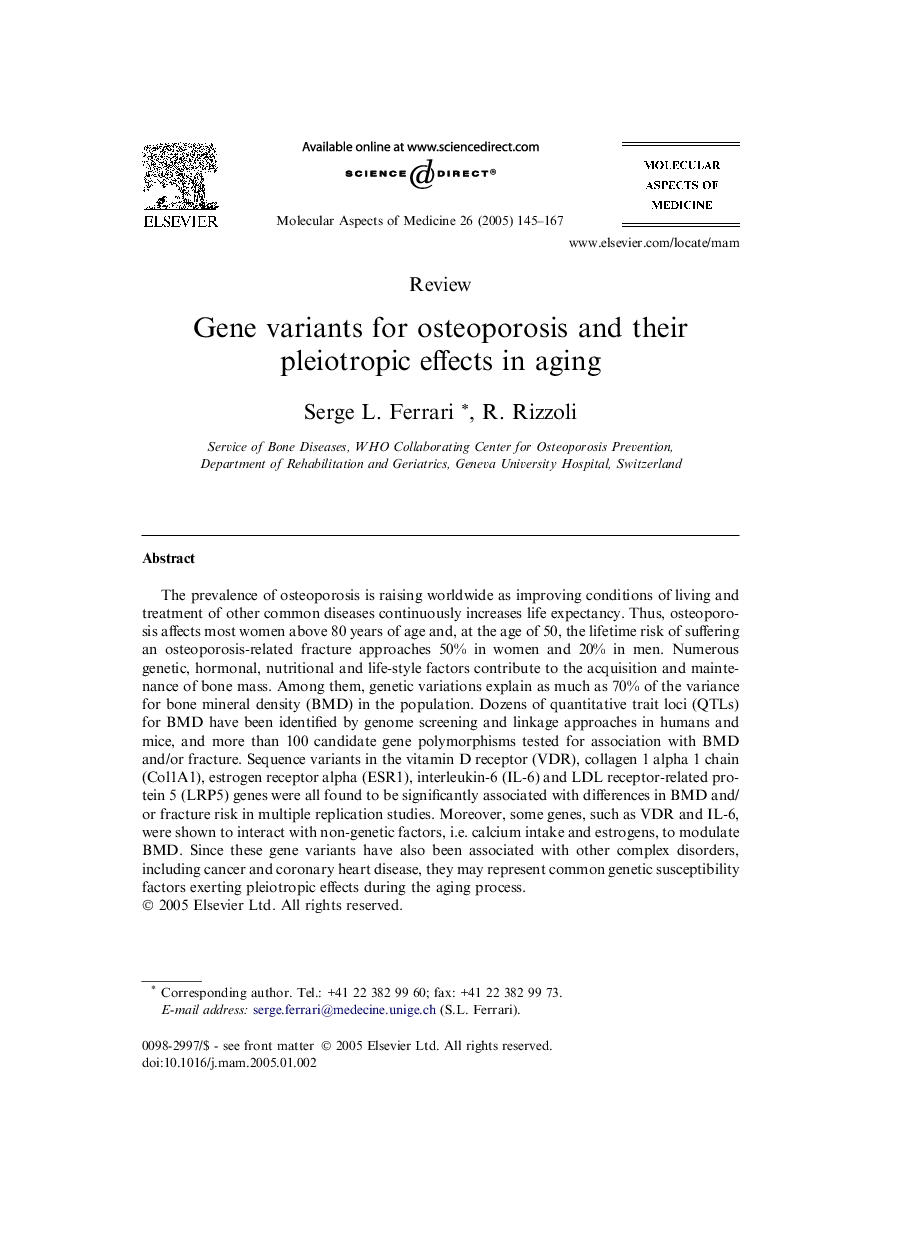| Article ID | Journal | Published Year | Pages | File Type |
|---|---|---|---|---|
| 9893161 | Molecular Aspects of Medicine | 2005 | 23 Pages |
Abstract
The prevalence of osteoporosis is raising worldwide as improving conditions of living and treatment of other common diseases continuously increases life expectancy. Thus, osteoporosis affects most women above 80 years of age and, at the age of 50, the lifetime risk of suffering an osteoporosis-related fracture approaches 50% in women and 20% in men. Numerous genetic, hormonal, nutritional and life-style factors contribute to the acquisition and maintenance of bone mass. Among them, genetic variations explain as much as 70% of the variance for bone mineral density (BMD) in the population. Dozens of quantitative trait loci (QTLs) for BMD have been identified by genome screening and linkage approaches in humans and mice, and more than 100 candidate gene polymorphisms tested for association with BMD and/or fracture. Sequence variants in the vitamin D receptor (VDR), collagen 1 alpha 1 chain (Col1A1), estrogen receptor alpha (ESR1), interleukin-6 (IL-6) and LDL receptor-related protein 5 (LRP5) genes were all found to be significantly associated with differences in BMD and/or fracture risk in multiple replication studies. Moreover, some genes, such as VDR and IL-6, were shown to interact with non-genetic factors, i.e. calcium intake and estrogens, to modulate BMD. Since these gene variants have also been associated with other complex disorders, including cancer and coronary heart disease, they may represent common genetic susceptibility factors exerting pleiotropic effects during the aging process.
Keywords
IL-6LRP5COL1A1VDRT2DMCHDDXACTXBMDQTLSNPsHRTEstrogeninterleukin-6coronary heart diseaseAreal bone mineral densityQuantitative trait locidual-energy X-ray absorptiometryType 2 diabetes mellitusAgingCancerHearthormone replacement therapyVitamin DC-reactive proteinCRPPolymorphismsSingle nucleotide polymorphismsOsteoporosisGeneVitamin D receptor
Related Topics
Life Sciences
Biochemistry, Genetics and Molecular Biology
Biochemistry
Authors
Serge L. Ferrari, R. Rizzoli,
